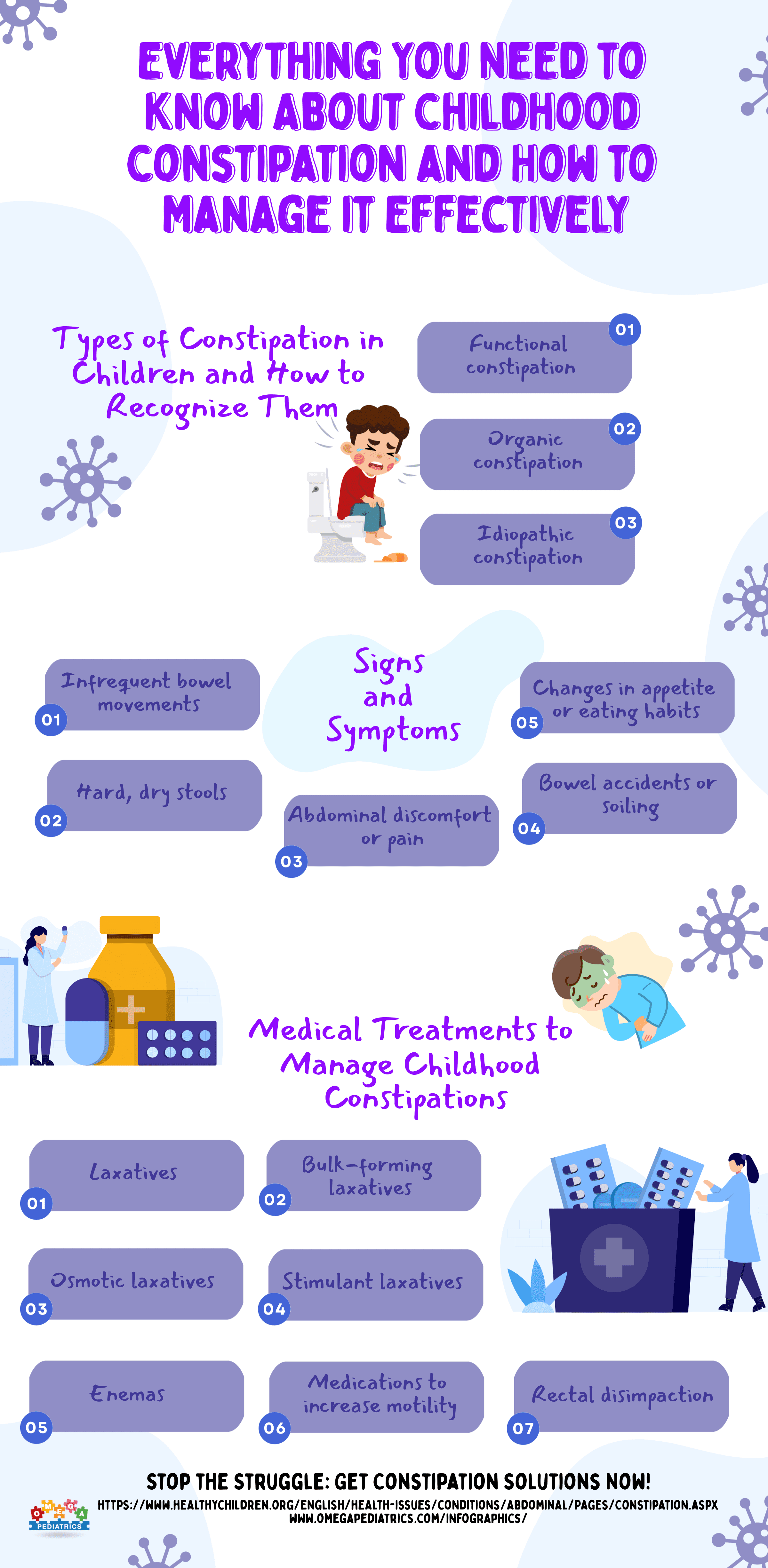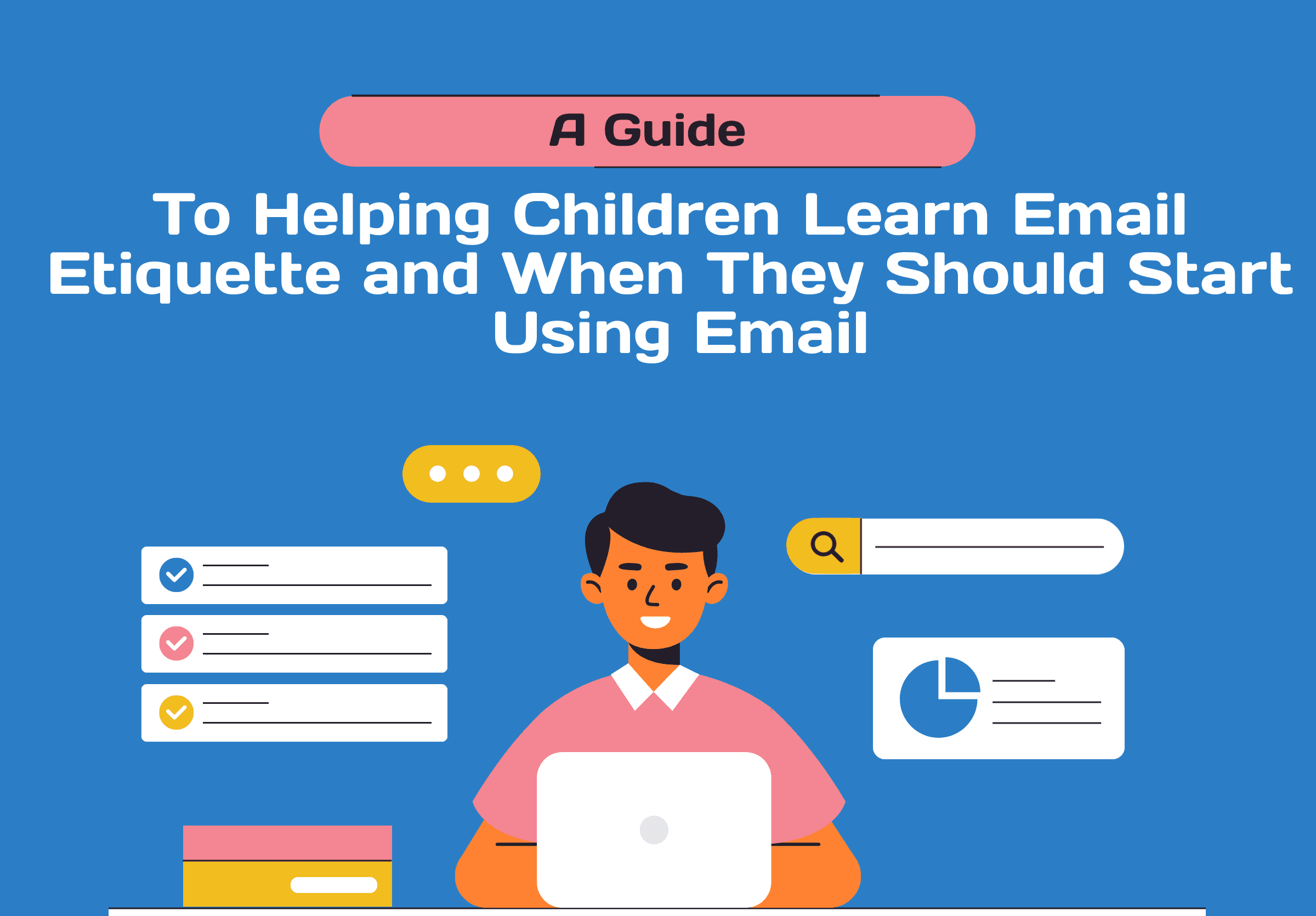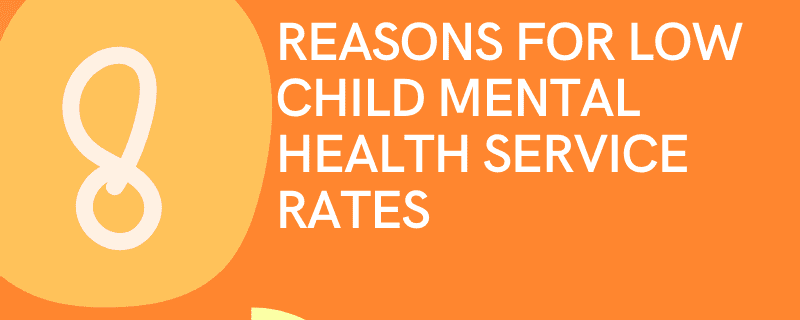
Constipation is a common digestive issue that affects children of all ages. Understanding the different types of constipation, recognizing the signs and symptoms, and knowing the available medical treatments can help parents and caregivers effectively manage childhood constipation. Here’s a comprehensive guide to childhood constipation:
Types of Constipation in Children and How to Recognize Them:
- Functional constipation: This is the most common type of constipation in children and typically occurs when a child resists or avoids having bowel movements. It may be triggered by factors such as changes in routine, toilet training difficulties, fear or pain associated with bowel movements, or inadequate fluid and fiber intake.
- Organic constipation: Organic constipation is caused by an underlying medical condition, such as an anatomical abnormality, metabolic disorder, or neurological issue. It requires a thorough evaluation by a healthcare professional to identify and address the underlying cause.
- Idiopathic constipation: Idiopathic constipation refers to chronic constipation with no identifiable cause. It is often a diagnosis of exclusion after ruling out other potential causes. It may be related to factors such as genetics, diet, or an imbalance in gut bacteria.
Signs and Symptoms of Childhood Constipation:
Recognizing the signs and symptoms of constipation is crucial for timely intervention. Common signs and symptoms include:
- Infrequent bowel movements: A child experiencing constipation may have fewer than three bowel movements per week.
- Hard, dry stools: The stools may be difficult to pass, appear dry and lumpy, or resemble small pellets.
- Abdominal discomfort or pain: Children with constipation may experience abdominal pain, cramping, or discomfort before, during, or after bowel movements.
- Changes in appetite or eating habits: Constipation can affect a child’s appetite, leading to reduced food intake or avoidance of certain foods.
- Bowel accidents or soiling: Some children with constipation may experience involuntary bowel movements or soiling due to the accumulation of stool in the rectum.
Medical Treatments to Manage Childhood Constipation:
In cases of childhood constipation, medical treatments may be necessary to alleviate symptoms and promote regular bowel movements. Here are some commonly used medical treatments:
- Laxatives: Laxatives help soften stools and promote regular bowel movements. They can be prescribed based on the child’s age, symptoms, and severity of constipation. Common types of laxatives include:
- Osmotic laxatives: These medications draw water into the intestines, softening the stool and making it easier to pass.
- Bulk-forming laxatives: These laxatives add bulk to the stool, making it easier to pass.
- Stimulant laxatives: These medications stimulate bowel movements by increasing intestinal contractions.
- Enemas: Enemas involve the introduction of fluid into the rectum to stimulate bowel movements and relieve constipation. They are typically used in severe cases or when other treatments have not been effective.
- Medications to increase motility: Some medications can help stimulate intestinal contractions and improve the movement of stool through the digestive tract.
- Rectal disimpaction: In cases of severe constipation or fecal impaction, a healthcare professional may perform a rectal disimpaction procedure to manually remove the impacted stool.
It’s important to note that medical treatments should be prescribed and supervised by a healthcare professional. They are usually used in conjunction with lifestyle modifications and dietary changes to effectively manage constipation.
In addition to medical treatments, lifestyle modifications and preventive measures play a crucial role in managing childhood constipation. These may include increasing fiber intake, encouraging physical activity, promoting regular toilet habits, and ensuring adequate fluid intake.
If your child is experiencing constipation, it is recommended to consult a healthcare professional for an accurate diagnosis, personalized treatment plan, and guidance on preventive measures. Early intervention and appropriate management can help relieve discomfort, promote regular bowel movements, and prevent long-term complications associated with childhood constipation.
Conclusion
In conclusion, childhood constipation is a common digestive issue that can be effectively managed through understanding its types, recognizing signs and symptoms, and employing appropriate medical treatments along with lifestyle modifications. Functional constipation, often triggered by factors like changes in routine or inadequate fiber intake, is the most prevalent type. Organic constipation results from underlying medical conditions, while idiopathic constipation lacks an identifiable cause.
Recognizing signs such as infrequent bowel movements, hard stools, abdominal discomfort, changes in appetite, and bowel accidents is crucial for timely intervention. Medical treatments, including laxatives, enemas, medications to increase motility, and rectal disimpaction, are available and should be prescribed and supervised by healthcare professionals. These treatments are typically used in conjunction with lifestyle modifications such as increased fiber intake, physical activity, regular toilet habits, and adequate fluid intake.
Consulting a healthcare professional is essential for an accurate diagnosis, personalized treatment plan, and guidance on preventive measures. Early intervention and appropriate management can alleviate discomfort, promote regular bowel movements, and prevent long-term complications associated with childhood constipation.



